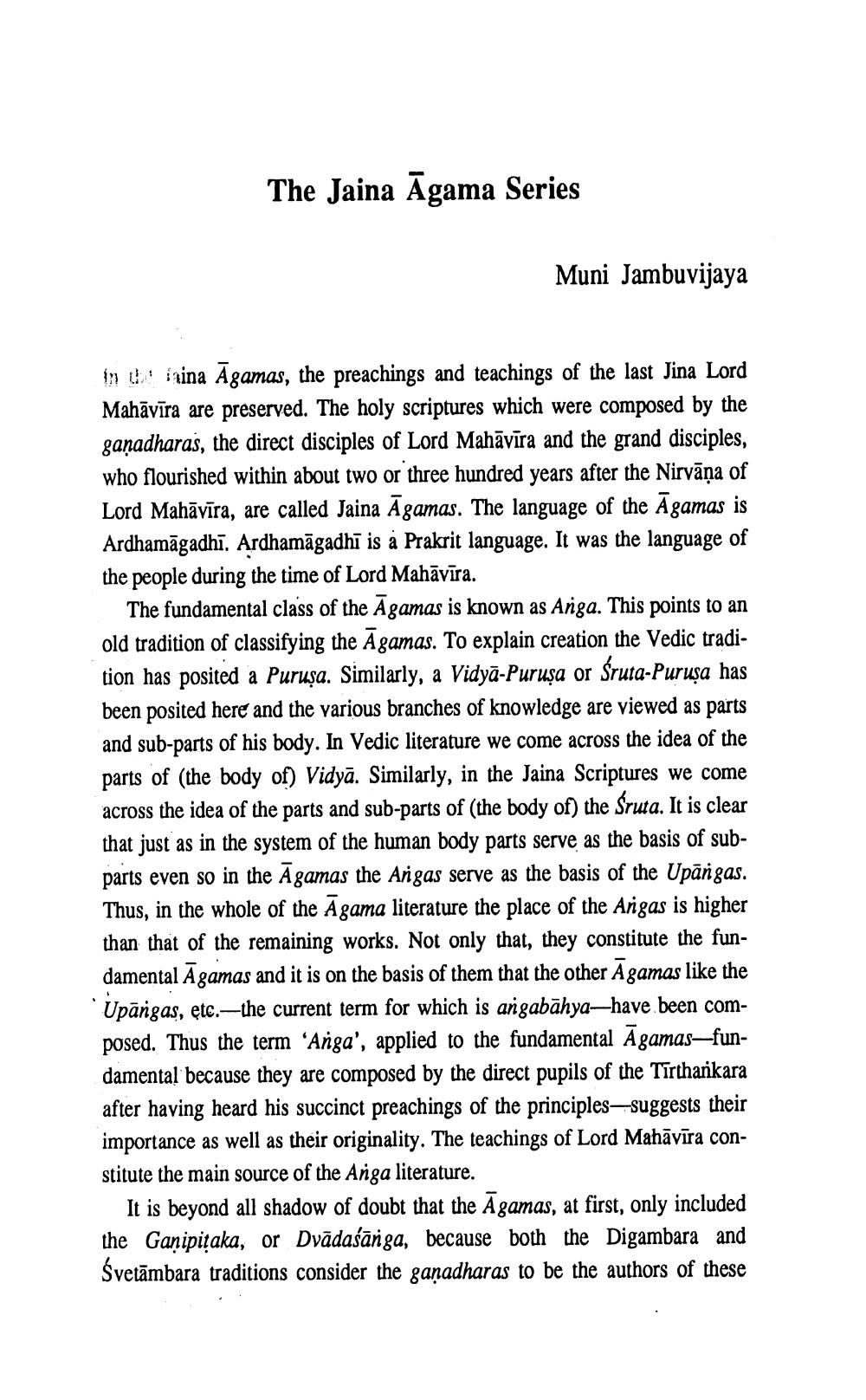Book Title: Jaina Agama Series Author(s): Jambuvijay Publisher: Jambuvijay View full book textPage 1
________________ The Jaina Āgama Series Muni Jambuvijaya in aina Āgamas, the preachings and teachings of the last Jina Lord Mahāvīra are preserved. The holy scriptures which were composed by the ganadharas, the direct disciples of Lord Mahāvīra and the grand disciples, who flourished within about two or three hundred years after the Nirvāṇa of Lord Mahāvīra, are called Jaina Āgamas. The language of the Āgamas is Ardhamāgadhī. Ardhamāgadhī is á Prakrit language. It was the language of the people during the time of Lord Mahāvīra. The fundamental class of the Āgamas is known as Anga. This points to an old tradition of classifying the Āgamas. To explain creation the Vedic tradition has posited a Puruşa. Similarly, a Vidyā-Puruşa or Sruta-Puruşa has been posited here and the various branches of knowledge are viewed as parts and sub-parts of his body. In Vedic literature we come across the idea of the parts of the body of) Vidyā. Similarly, in the Jaina Scriptures we come across the idea of the parts and sub-parts of (the body of) the Sruta. It is clear that just as in the system of the human body parts serve as the basis of subparts even so in the Āgamas the Angas serve as the basis of the Upāngas. Thus, in the whole of the Āgama literature the place of the Angas is higher than that of the remaining works. Not only that, they constitute the fundamental Āgamas and it is on the basis of them that the other Āgamas like the Upāngas, etc.— the current term for which is angabāhya—have been composed. Thus the term 'Anga', applied to the fundamental Āgamas—fundamental because they are composed by the direct pupils of the Tīrtharkara after having heard his succinct preachings of the principles-suggests their importance as well as their originality. The teachings of Lord Mahāvīra constitute the main source of the Anga literature. It is beyond all shadow of doubt that the Āgamas, at first, only included the Ganipițaka, or Dvādaśānga, because both the Digambara and Śvetāmbara traditions consider the gañadharas to be the authors of thesePage Navigation
1 2 3 4 5 6 7 8 9 10 11 12
